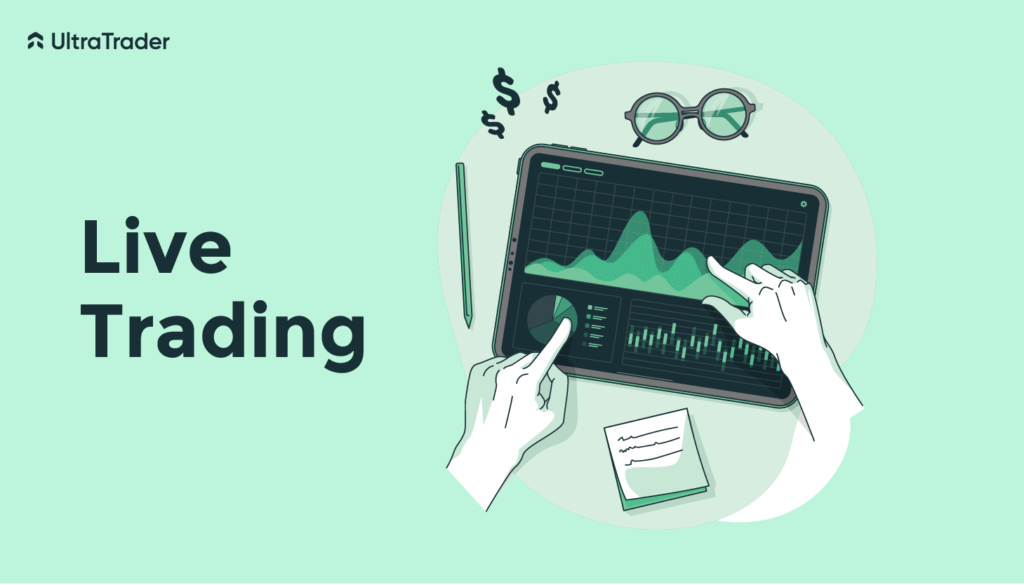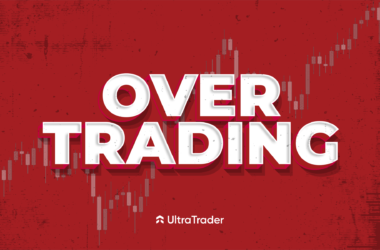Are you new to trading? If not, you might have already discovered that trading success often depends on making informed decisions. The key to profitability is understanding the numbers. When navigating the complexities of trading, relying on data rather than opinions is often the winning formula.
Statistics show that traders using a long-term trend-following strategy experience an impressive average yearly profit of 16.8%. On the other hand, those opting for a speedy trading approach still achieve an average annual profit of 12.5%. These statistics show the power of data-driven decision-making in trading.
Now, let’s explore the two main approaches traders use to implement their strategies: paper trading vs. live trading.

Exploring Paper Trading vs. Live Trading
Paper trading and live trading offer two distinct ways for traders to implement their strategies.
What’s Paper Trading?

Paper trading is like a practice run for trading without using real money. It’s a way for traders to test their strategies and learn how the market works. Traders make simulated trades using fake money or virtual accounts instead of buying and selling stocks or other assets with real money. It’s a safe way to gain experience and confidence before going deeper into trading.
What is a paper trading account?
A paper trading account is a simulated trading account that allows you to practice buying and selling assets without using real money. You can test strategies, learn how the market works, and gain experience without risking capital. Paper trading accounts typically provide users with simulated funds to trade with, allowing them to execute trades based on actual market data without financial risk. For more informed decisions, Ultratrader will always come to help!
How does paper trading work?
First, you need to select a paper trading platform. Many brokerage firms offer paper trading accounts. Once you choose a platform, traders must sign up for an account. After signing up, you can log in to your paper trading account and access the platform’s features. What is the next?
- Practice trading with simulated funds.
- Track performance and learn from mistakes.
Once you feel confident in your abilities and have demonstrated consistent success with paper trading, you can choose to transition to live trading.
Which is the best platform for paper trading?
The best paper trading app should align with your goals and provide a practical learning experience. Consider the platform’s user interface, available features, asset selection, and compatibility with your trading style. Exploring different platforms is essential to assess how well they meet your requirements for practicing and refining your trading strategies in a simulated environment.
What is live trading?

Live trading involves actual transactions with real money in the financial markets. Traders execute buy and sell orders using their brokerage accounts or other trading platforms. Live trading carries actual financial risk, and the outcomes directly impact the trader’s investment capital. It occurs in real-time market conditions, where prices fluctuate based on supply and demand, economic news, geopolitical events, and other factors.
When should you start live trading?
Do you understand the market you’re trading in, including its dynamics, trends, and potential risks? If you have done your research and feel knowledgeable about the market, you may be ready to start live trading. Your decision should depend on trading performance, emotional readiness, risk management skills, market knowledge, and financial situation. If you feel confident in these areas, you can start live trading.
How does live trading work?
Live trading involves actively participating in the market, executing trades based on real-time market data, and managing positions to generate profits while minimizing risk. It requires discipline, skill, and the ability to decide in an unpredictable market environment. After the session, traders review their performance to assess their trades’ success and identify areas for improvement.
How do I start to live trade?
First, select a reputable brokerage firm or trading platform offering live trading services. Once you choose a broker, open a live trading account. Then, you should create a complete trading plan that outlines your trading goals, risk tolerance, and strategy.
When you are ready to start trading, begin with a small amount of capital. It will allow you to gain experience and confidence without risking too much of your capital upfront. After each trading session, review your performance and analyze your trades. Identify what went well and what didn’t, and look for areas where you can improve.
Which is the best platform for live trading?
Like paper trading, the platform you choose depends on your specific trading needs, preferences, and experience level in live trading. Each platform offers unique features such as advanced charting tools, order execution capabilities, market analysis resources, access to various financial instruments, etc. You should choose based on your trading goals and provide the tools and support you need to succeed in the markets.
Paper trading vs. live trading: pros and cons
Paper Trading Pros:
- Paper trading allows one to practice trading strategies without risking real money.
- It offers valuable learning opportunities for traders to understand the market, analyze trends, and develop effective trading strategies.
- Traders can make decisions without the emotional pressure of live trading.
Paper Trading Cons:
- Paper trading does not involve real money, so traders may not experience the same emotional highs and lows as they would in live trading.
- Successful paper trading performance may make traders overconfident in their abilities.
Live Trading Pros:
- Live trading offers the opportunity to generate real profits by executing trades with actual money in the financial markets.
- Trades executed in live trading provide immediate feedback on their performance.
- Live trading allows traders to grow their capital and achieve their financial goals.
Live Trading Cons:
- Live trading involves the risk of losing real money. Unsuccessful trades can result in financial losses for traders
- Live trading carries the risk of execution errors and technical glitches.
Conclusion
Every decision matters in trading. Analyzing market trends, assessing risk factors, and using data are crucial for navigating the market effectively. This decision-making process is essential for traders, as it helps them use their opportunities and prevent potential losses. By prioritizing data-driven strategies over emotional impulses, you can enhance your chances of success.
Paper and live trading are two choices for traders when implementing their strategy. Paper trading offers a risk-free environment for traders to practice and refine their approaches. Through simulation and historical data analysis, traders can test different strategies and gain experience without financial risk. On the other hand, live trading provides the opportunity to execute accurate trades with real money, offering an experience that simulators cannot duplicate.
Do you make informed decisions? Ultra Trade will be your valuable tool for traders seeking to improve their performance and bridge the gap between paper trading and live trading. As a complete trading journal, simulator, and tracking tool, UltraTrader helps traders analyze their performance and make informed decisions. While traders cannot execute trades directly on UltraTrader, they can use its real-time paper trading, monitoring, and other capabilities and learn from past actions to enhance their trading skills and increase their chances of success.










